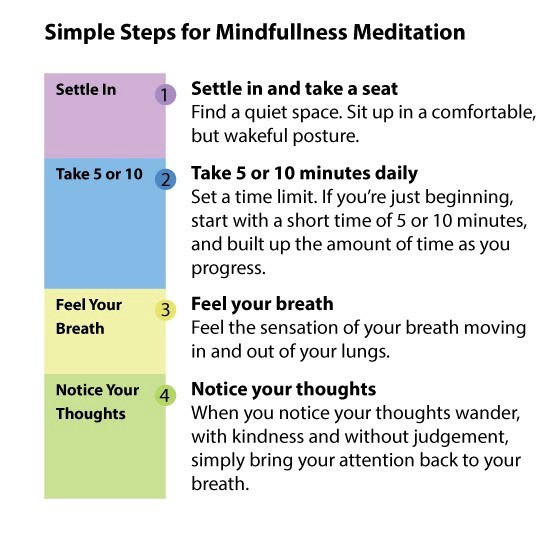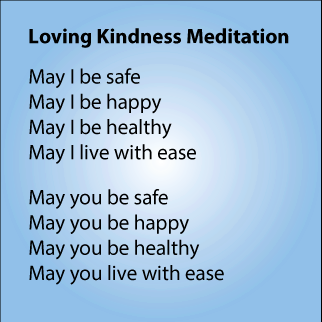The word alone is neutral, and it can either morph into loneliness or solitude when we add emotion to it.
“Our language has wisely sensed the two sides of being alone. It has created the word “loneliness” to express the pain of being alone. And it has created the word “solitude” to express the glory of being alone.”
– Paul Tillich (The Eternal Now, 1952)
When we feel lonely, it’s not because we don’t have someone or something in our life. It’s because we aren’t present with ourselves. We haven’t learned how to regulate our emotions. We don’t know how to feel validated and loved unless someone reflects it to us or we are in a state of distraction.
Community – Benefits and Drawbacks
Our culture also places so much emphasis on the community for a cure for our loneliness. A community can be beneficial, provide a sense of trust, safety, mutual respect, transparency, and similar values. Communities can also be detrimental, especially when there’s judgement, shame, control and manipulation. On the extreme end, they can be toxic, such as cults.
I view a community as contributing to one’s overall life satisfaction, not the cause of it.
Some cultures, particularly in the East, are also more oriented towards collectivism (focus is on community, state and groups). In contrast, Western societies like North America are more oriented towards individualism (focus on self and immediate family). In many Eastern cultures, the expectation for healthy adults can be to provide and be closely involved emotionally and socially with their families. For example, living in a multigenerational household. Conversely, in Western societies, emotionally healthy adults expect to achieve independence and be physically separated, such as moving out at twenty. Neither is good or bad, better or worse. However, it’s crucial to find the balance for ourselves, especially for those who grew up with an influence of both cultures.
Companionship
Realistically, no one will save us from our loneliness, nor can they, not in any permanence. When we long for others to complete us, that is a prescription for unhealthy relationships and codependency. It’s similar to going to the grocery store hungry. Most of us have little refrain from what we’ll grab. We’ll choose what is most convenient to satisfy our immediate urge. However, when our stomachs are full, we can shop with a clear mind and discern what is healthy for us.
“Other people are not medicine”
– Amy Poehler
Constant Distraction
Those of us can spend time alone but participate in activities that distract us from ourselves. We will get addicted to running, cycling, or some other means. We can even get addicted to meditation. As long as there is a dependency, we use it as a coping mechanism to avoid difficult emotions and situations.
“All of humanity’s problems stem from man’s inability to sit quietly in a room alone.”
― Pensées
Turning Loneliness into Solitude
If our goal is to rid ourselves of loneliness and become connected with ourselves again, and enjoy being alone. Each method mentioned is a way to expose our mind to different methods and practices meant to heal, not be to be dependant on it, but rather incorporate it. There are several paths to the same destination of solitude:
1. Reframe our perspective
When we add meaning to being alone or negative emotions such as fear or sadness, it turns into loneliness. However, when we accept the current situation we are in as if we chose it, that allows us to look for opportunities within our aloneness. When we view being alone as an opportunity and a gift, we change the word alone from meaning loneliness into meaning solitude. In the space of solitude, we have the opportunity to discover and uncover who we really are.
2. Mindfulness Meditation
Silence is something many people can’t bear with. The voice in our heads tends to chat a lot, going through what we need to do, ruminating on the past, or playing out situations that could happen in the future. This happens since many of us haven’t been taught how to manage, label our thoughts and work through our emotions, suppress them or let them run free.
Mindfulness Meditation is a mental training practice, and the techniques taught can vary. Overall, Mindful Meditation generally encompasses paying attention to the present moment, feeling our breath, listening to our body, and observing and slowing down our thoughts.

“Stillness is where creativity and solutions to problems are found”
The regular practice of Mindful Meditation plays a significant role in reducing stress and anxiety, regulating our emotions, improving attention, enhancing memory, and promoting empathy. The Harvard Gazette indicates further “20 minutes twice a day is often recommended for maximum benefit.” Ultimately, we use this method to train our minds, but over time becoming mindful in our everyday experiences.
3. Loving-Kindness Meditation
This practice is also known as Metta Meditation. It encompasses sending love, health and other feelings of well-being to ourselves, others, and then the world. It follows a simple script such as, “May I be safe, may I be happy, may I be healthy, may I live with ease.”

Once we have cultivated those feelings for ourselves, in steps we expand the message to loved ones, then strangers, those we are in opposition with, and then lastly the world.
Practising this type of meditation can make us feel compassion for ourselves and deeply connected to others, dissipating feelings of loneliness. Ultimately we practice this type of targeted meditation to automatically foster compassionate responses for ourselves and others.
4. Inner Child Work
Not everyone is in touch with their inner child, parts of our emotional development have matured to our chronological age, while other parts of us get stuck and stay in the same emotional age as when we were children. This happens when our inner child has been denied, neglected, abandoned or rejected.
To reclaim our inner child is to acknowledge our wounding, the source memories, and to re-parent ourselves by giving ourselves the nurturing we needed. We can do this through several techniques, some are:
Visualization and Talking to our Inner Child
We visualize ourself as a child, we also visualize ourself as an adult close to our child self. We give our inner child a safe setting, a space to be heard, acknowledged, and are understood. We might tell them that “I hear you,” “I love you,” “I’m here for you,” “It was not your fault,” “I care for you,” and “You’re no longer alone.”
Recreate Activities We Enjoyed
“The happiest moments of your life — when the real you comes out when you don’t care about the past and you don’t worry about the future. You are childlike.”
As a child, if we loved to build pillow forts, climb trees, paint, or whatever we enjoyed doing, we need to allow ourselves to get back in touch with that curiosity, fun, and wonder.
Journaling
Get in touch with our inner child by:
- Writing down how we felt from the perspective of the inner child. It’s best to focus on a specific event or feeling so that we don’t become overwhelmed.
- We want to sit with those feelings, if we avoid them they will only increase and manifest in another fashion.
“The only way out is through.” — Robert Frost.To heal, we must go through the fog of pain and grief. We want to acknowledge and honour our pain. - Then write a letter back to our inner child as our adult self giving us what we need such as; the acknowledgement of our pain, reassurance, safety, the comfort we needed to hear, and the permission to resist and patience when our inner child isn’t ready yet. We know what we need to hear, we know what we want and what we are ready for.
Solitude
Turning Loneliness into Solitude might seem pretty easy and fairly simple for some of us. However for many of us, the feelings of loneliness have deeper roots, and if we’re willing to do the necessary work, we’ll reap the rewards of solitude.



